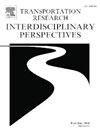多拼车,少开车:对自动驾驶汽车拼车的障碍和动机的调查
IF 3.8
Q2 TRANSPORTATION
Transportation Research Interdisciplinary Perspectives
Pub Date : 2025-04-29
DOI:10.1016/j.trip.2025.101427
引用次数: 0
摘要
将自动驾驶汽车提供的按需拼车服务整合到交通系统中,为未来的移动挑战提供了解决方案。如果这种服务能有效地让乘客共享一辆车,而不是独自驾驶,那么更高的车辆入住率将使现有道路基础设施得到更有效的利用。这反过来可以帮助缓解交通拥堵及其相关的弊端。潜在用户接受这种自动拼车(aRP)服务对其成功采用至关重要。因此,本定性研究旨在揭示决定aRP接受度的相关因素,并利用以用户为中心的方法更好地了解aRP接受的驱动因素和障碍。通过对不同参与者的18次半结构化深度访谈,该研究揭示了性能期望在安全性、舒适性、灵活性、可持续性和社会方面对形成对aRP的接受度的重要性。值得注意的是,对这些因素的矛盾态度和有争议的看法,以及公共交通和私家车用户之间的差异,强调了客户细分和定制策略对aRP服务设计和推广的重要性。研究结果强调,aRP服务需要优先考虑以用户为中心的方法,以便将aRP作为一种更可持续的选择纳入未来的交通系统。本文章由计算机程序翻译,如有差异,请以英文原文为准。
Pool more, drive less: An investigation of barriers and motivators of ridepooling in autonomous vehicles
The integration of on-demand ridepooling services provided by autonomous vehicles into transportation systems offers a solution to mobility challenges in the future. If such services effectively enable travellers to share a vehicle instead of driving alone, higher vehicle occupancy rates would lead to a more efficient use of existing road infrastructure. This in turn could help alleviate traffic congestion and its associated drawbacks. The acceptance of such autonomous ridepooling (aRP) services by prospective users is essential for their successful adoption. Therefore, this qualitative study aims to uncover the relevant factors that determine aRP acceptance and to better understand the drivers and barriers of aRP acceptance using a user-centered approach. Through 18 semi-structured in-depth interviews with a diverse range of participants, the study revealed the significance of performance expectations with regards to safety, comfort, flexibility, sustainability, and social aspects in shaping acceptance for aRP. Notably, ambivalent attitudes and controversial perceptions of these factors as well as differences between public transport and private car users underscore the importance of customer segmentation and tailored strategies for the design and promotion of aRP services. Findings emphasize the need for aRP services to prioritize user-centric approaches to enable the adoption and facilitate the integration of aRP as a more sustainable option into future transportation systems.
求助全文
通过发布文献求助,成功后即可免费获取论文全文。
去求助
来源期刊

Transportation Research Interdisciplinary Perspectives
Engineering-Automotive Engineering
CiteScore
12.90
自引率
0.00%
发文量
185
审稿时长
22 weeks
 求助内容:
求助内容: 应助结果提醒方式:
应助结果提醒方式:


